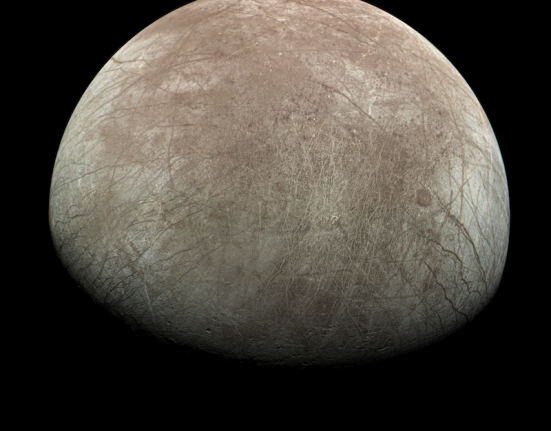
NASA / JPL-Caltech / SwRI / MSSS / Europlanet
NASA's Juno mission has discovered a new volcano on Jupiter's extremely volcanic moon Io. The new formation has spewed out multiple lava flows and deposits covering a region about 180 kilometers (110 miles) across. The volcano is recent, as NASA's Galileo mission saw only a featureless surface in the same region when it flew by in 1997. On behalf of the JunoCam team, Michael Ravine (Malin Space Science Systems) revealed the formation as part of a series of new results presented at the conference. Europlanet Scientific Congress in Berlin, Germany.
As part of Juno’s extended mission, the spacecraft has conducted multiple flybys of Jupiter’s volcanic moon. Three recent flybys — on Dec. 30, 2023, and Feb. 3 and April 9, 2024 — have captured 20 images that reveal unprecedented detail about Io’s surface. That includes nine volcanic plumes ranging in height from 50 to 100 km (30 to 60 miles), as well as new lava flows and deposits.

NASA/JPL-Caltech/SwRI/MSSS

credit
Among the new findings, Ravine presented images of a “large, complicated volcanic formation that appears to have formed out of nowhere since 1997.” The formation appears in images obtained during the Feb. 3 pass, including two shots taken during Io’s nighttime. The light illuminating the surface comes from Jupiter's brightnessor sunlight reflected by Jupiter.
The new volcano spewed sulfur into space, which then fell onto Io's surface, turning the eastern area red. On the western side, two dark streams of lava run for about 100 kilometers and accumulate at the farthest point. There, the heat of the lava vaporized the surface material, creating two overlapping dark gray deposits.

NASA / JPL-Caltech / SwRI / MSSS / Europlanet / Google Maps
Juno Camera It is not one of the mission's primary science instruments, but is included for public engagement, though it clearly packs a lot of scientific punch as well. Its wide field of view and high resolution result in detailed images of Jupiter and its moons during close flybys. Once transmitted to Earth, those images are made available on missionjuno.swri.eduavailable to anyone for processing and analysis.
(tags to translate)Io








Leave feedback about this